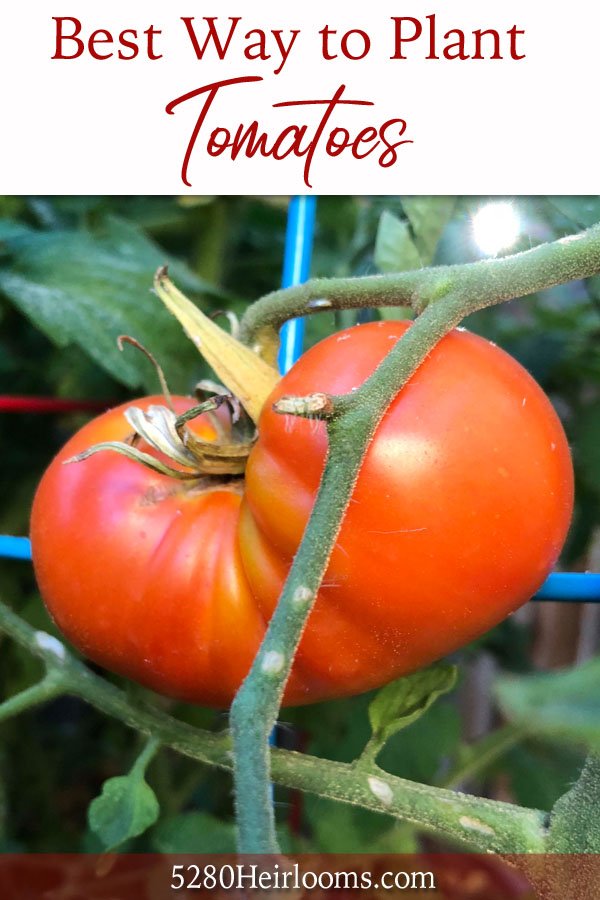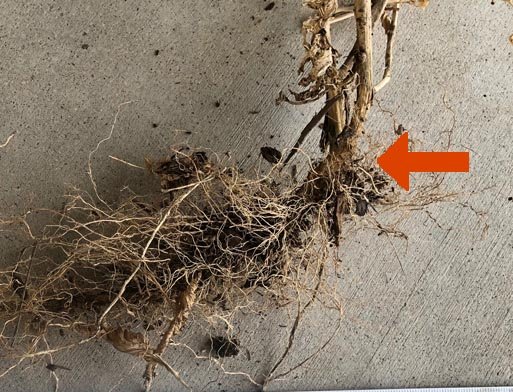
Best Way to Plant Tomatoes, Period!
April 6, 2019A customer once told me a story about how her landscaper inadvertently ran over one of her heirloom tomato plants with the lawn mower. According to her, the plant was around a foot tall, had just started taking off and… shredded! I was sorry to hear the news but it wasn’t the first story I’d heard of someone losing a plant. I wished her better luck this growing season but, to my surprise, her story didn’t end there. She then stated that my trenching instructions were the best way to plant tomatoes, ever!
I’ve been religiously telling my customers for years to trench their tomatoes when they plant. I can never be sure if anyone ever follows through on these instructions but this particular customer’s guillotined heirloom was proof that she did. The plant had so much energy underground, producing roots, that when the lawn mower came calling the plant had strength enough to recover. Not only did it recover but, according to her, it produced like gang busters. She was now a believer in trenching… and searching for a new landscaper.

Trenching is the process of planting your tomato vine sideways, just beneath the soil surface, and burying up to three quarters of the stem.
Yes, you read that right. You literally plant your tomatoes sideways and bury most of the stem, but why? Below are some of the benefits of trenching your tomatoes:
- Tomatoes are vines and any portion of the tomato vine that contacts soil will send out beneficial roots. Use that to your advantage.
- More roots equals more nutrient drawing ability for the plant. You may give up initial growth by trenching but once the plant is established it quickly takes off.
- Mid May and early June, tomato planting time in Colorado, generally means afternoon thunderstorms and destructive hail. Trenching your tomatoes protects your plant and leaves only a few inches of the plant exposed during this vulnerable time.
- Over 90% of the worms and beneficial micro organisms live in the top six inches of your soil. Planting your tomatoes sideways, rather than deep, keeps the entire plant in that crucial top six inches.
- Colorado’s notorious clay soil causes drainage and watering issues. Drainage issues are the primary reason for blossom end rot and numerous other tomato maladies. Read my post on blossom end rot for more information. Trenching your tomatoes keeps roots closer to the soil’s surface alleviating most drainage issues.

The above photo illustrates the benefits of trenching. Notice the tremendous root development along what used to be the tomato’s stem. 14 in. of roots!

The plant above was damaged by hail soon after planting and the stem was completely broken off just above the soil surface. I was confident the plant was toast. Not only did the plant survive, it developed two main stems.
How to trench your tomatoes
- I tend to look for tomatoes with longer stems. Bushy always looks nice but when it comes to trenching, longer stems allow you to bury more stem.
- Remove at least 2/3 of the leaves along the stem starting from the base. This may seem counter productive but it is absolutely necessary. Pinch the leaves as close to the stem as possible being careful not to damage the stem. Be sure to leave two or three leaves at the top so the plant can take in some sun.
- Dig a hole for the root ball and a small trench for the stem just below the soil’s surface. Add any organic fertilizer or amendments to the hole and trench.
- Lay the tomato plant on its side and run the stem along the trench so only the top of the plant, with its leaves, sticks out. Bury the root ball and stem.
- Slightly bend the exposed portion of the plant so that it is not laying directly on the soil’s surface. The stem is pliable but be careful not to break it. DO NOT bend the stem at a 90 degree. The plant’s natural tendency is to grow towards the light so it will naturally straighten.
- Water your plant in. Be sure to remember, or mark, where you planted the root ball and apply water there. Also, if trenching tomatoes in a row, it is best to have all the root balls facing the same direction for spacing reasons.
- Place your tomato cage now because when the plant gets established it will take off quickly.
Trenching should be used when planting in ground or raised planting beds. If planting in containers it is recommended to plant your tomatoes deep.

